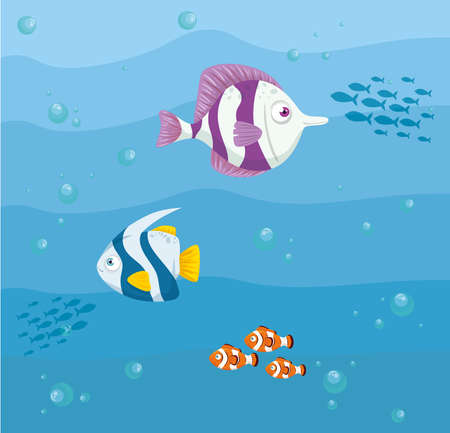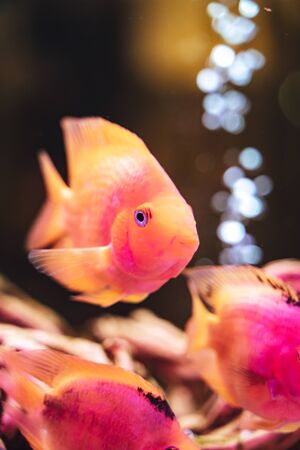1. Understanding Regional Water Conditions
India, with its rich tapestry of climates—from the humid coasts of Kerala to the dry expanses of Rajasthan—offers a unique challenge for fish lovers and aquarium enthusiasts. As a devoted cat parent might carefully select the perfect spot by the window for their feline friend, so too must an aquarist be mindful of the regional water conditions that shape the wellbeing of their aquatic pets. Across India, water sources vary greatly; some households rely on borewell water rich in minerals, others access river water teeming with life, while many urban homes receive municipal tap water treated with chemicals. Each source brings its own character and quirks to the aquarium, influencing everything from pH balance to hardness levels. Before introducing any fish to your tank, it’s essential to test your local water—just as you’d check if your kitten’s milk is fresh and safe. Using simple test kits can help you understand parameters like ammonia, nitrites, nitrates, and general hardness (GH/KH). Conditioning your water to suit the needs of your chosen fish species is not just a precaution; it is an act of love and responsibility. In places where water quality fluctuates with seasons or monsoons, regular monitoring ensures your finned friends remain healthy and happy. By embracing regional differences and being attentive to local water traits, you lay a strong foundation for a thriving aquarium—one as comforting as a sunny spot for a sleepy cat.
Choosing the Right Fish Species for Your Area
As every proud Indian cat parent knows, just as our feline companions have their favorite cozy spots and climate preferences, so do our aquatic friends. When selecting fish for your aquarium, it’s vital to consider the local climate and water conditions of your region. This ensures your fishy buddies remain happy, healthy, and stress-free—just like a content kitty sunning itself on a warm afternoon!
Tips for Selecting Native or Hardy Fish Breeds
The diversity of India’s climate means that what thrives in the snowy North may not flourish in the humid South or breezy coastal areas. Choosing native or hardy species suited to your area’s temperature and water parameters is key. Here are some gentle guidelines (with purring approval):
Consider Local Temperature
- Northern India: Regions like Delhi, Punjab, and Himachal Pradesh experience cooler winters. Choose cold-tolerant species such as Goldfish, Rosy Barbs, and Zebra Danios.
- Southern India: States like Tamil Nadu and Kerala are warm year-round. Opt for tropical species such as Guppies, Mollies, and Bettas.
- Coastal India: West Bengal, Goa, Odisha, and coastal Andhra Pradesh have saline influence and moderate climates. Brackish water fish like Monos, Scats, and Mudskippers can thrive here.
- Central India: Areas like Madhya Pradesh see seasonal variation. Hardy species such as Swordtails, Tetras, and Corydoras Catfish adapt well.
Match Water Parameters
- Test your tap or borewell water for pH, hardness (GH/KH), and salinity.
- Select fish breeds with similar requirements—native species often match your natural water conditions best.
- If you adore exotic varieties (like a curious kitten eyeing new toys), be prepared to adjust water using conditioners or RO systems.
Indian Regional Fish Suggestions Table
| Region | Climate Type | Recommended Species (Examples) | Notes |
|---|---|---|---|
| Northern India | Cool/Temperate | Goldfish, Rosy Barb, Zebra Danio | Avoid sensitive tropicals; prefer hardy varieties. |
| Southern India | Tropical/Warm | Molly, Guppy, Betta, Indian Glassfish (Parambassis ranga) | Tropical species thrive; ensure good aeration. |
| Coastal India | Tropical/Brackish | Mudskipper, Mono, Scat, Pufferfish (Tetraodon cutcutia) | Select brackish-tolerant species; monitor salt levels. |
| Central India | Tropical with Variation | Swordtail, Tetra, Corydoras Catfish, Indian Barb (Puntius sophore) | Choose adaptable species; watch for seasonal changes. |
This mindful selection process will help you create an aquarium that echoes the harmony of nature—where every scale glistens with health and every whisker twitches with curiosity! Remember: understanding your own region is the first step toward being a loving fish keeper (and keeping those nosy cats entertained!).

3. Temperature Regulation across Indian Seasons
India’s diverse climate means that our finned companions face a variety of temperature challenges, from Delhi’s bone-chilling winters to Chennai’s humid, tropical summers. As loving cat parents who understand the importance of cozy nooks and warm sunbeams, we know how crucial it is to maintain a comfortable environment for those we cherish—including our aquatic friends.
Understanding Seasonal Shifts
In northern regions like Delhi and Chandigarh, winter temperatures can drop unexpectedly, causing aquarium water to cool rapidly. Conversely, in southern cities such as Chennai or Kochi, the relentless heat can make water temperatures soar. Fish, much like our feline companions curling up on a sunny windowsill or seeking shade under the sofa, require stable conditions to thrive.
Using Heaters in Chilly Winters
For cold-prone areas, investing in a reliable aquarium heater is essential. Set your heater to maintain a steady temperature suitable for your fish species—most tropical varieties prefer 24°C to 28°C (75°F to 82°F). Always use a thermometer to monitor fluctuations, just as you would check if your kitty’s favorite spot is still warm enough on a wintry day.
Coping with Summer Heat: Fans and Cooling
During sultry months in places like Mumbai or Hyderabad, aquariums can overheat quickly. Small fans placed above the tank help evaporate excess warmth—think of it as providing a gentle breeze for your whiskered friend lounging by the window. Regularly topping up evaporated water with dechlorinated water ensures your aquatic pets remain healthy and content.
Traditional Indian Methods
Many seasoned Indian aquarists rely on age-old tricks: placing clay pots near tanks for natural cooling or wrapping tanks with damp cloths during peak summer. These techniques are akin to offering your cat a cool ceramic tile during May’s swelter—a tender gesture rooted in love and local wisdom.
Gentle Monitoring and Care
No matter where you live—from Rajasthan’s deserts to Assam’s lush valleys—gently observe your fish for signs of distress due to temperature swings: lethargy, unusual swimming, or loss of appetite. Just as you’d stroke your kitty’s fur when she seems out of sorts, respond promptly with warmth or cooling as needed. Consistent care will ensure your underwater world remains harmonious and joyful throughout India’s ever-changing seasons.
4. Diet and Feeding Tips with Local Flavours
Understanding the dietary needs of your finned companions is essential, especially in a diverse country like India, where the availability of fish food ingredients can vary across regions. As a loving cat would carefully choose the best treats for her kittens, so should we, as aquarium caretakers, select the most suitable food for our aquatic friends. Below are some insights into feeding habits and how to make use of regionally available ingredients or trusted Indian fish food brands, all while keeping local accessibility and cost in mind.
Recognising Feeding Habits by Region
Different Indian regions may favour different types of fish species—goldfish in Delhi’s cooler climes, mollies in coastal Kerala, or gouramis in West Bengal. Each comes with unique dietary preferences. For instance, herbivorous fish thrive on a diet rich in plant matter, while carnivores require protein-rich options. Observing your fish at feeding times—do they dart for floating pellets or nibble at the tank bottom?—will help you select the right type of feed.
Locally Sourced Ingredients for Homemade Fish Food
Many Indian households have easy access to nutritious foods that can double up as excellent homemade fish food. Here is a simple guide:
| Region | Easily Available Ingredients | Suitable Fish Types |
|---|---|---|
| North India | Spinach, peas, boiled rice crumbs | Goldfish, barbs |
| South India | Cucumber slices, coconut meat (shredded), mosquito larvae (seasonal) | Mollies, guppies |
| East India | Pumpkin bits, small freshwater shrimps | Gouramis, tetras |
| West India | Lettuce leaves, wheat flour pellets | Tilapia, swordtails |
Indian Fish Food Brands: Reliable Choices Across Regions
If preparing homemade food feels daunting or time-consuming—especially when life gets busy like chasing after curious kittens—rely on well-known Indian fish food brands. Some popular options include:
- Taiyo: Widely available and budget-friendly pellets and flakes suitable for most tropical species.
- Optimum: Especially loved for its protein-rich formulas ideal for faster growth and vibrant colours.
- Boltz: Focuses on natural ingredients and is often found in metropolitan pet stores.
- Aquafin: Easy to find even in smaller towns; offers granules and flakes for both goldfish and ornamental species.
Feeding Frequency and Portion Control
No matter which diet you choose—a blend of homemade delights or branded feeds—the golden rule remains: feed little but often. Overfeeding leads to water quality issues and unhealthy fish. A gentle paw-tap reminder: feed an amount your fish can consume within 2-3 minutes, once or twice daily depending on their age and activity level.
Caring with Love and Mindfulness
By blending locally accessible foods with trusted Indian brands, you ensure your aquarium community thrives healthily without stretching your budget. Just as a cat brings comfort to her home by caring for every member—furry or finned—your thoughtful choices nourish not only your fish but also your heart.
5. Tackling Common Issues: From Monsoon Stresses to Water Hardness
As every Indian cat parent knows, each season brings its own quirks and challenges—especially for our finned friends in their glassy abodes. Let’s gently explore how to keep your aquarium thriving despite India’s unique climatic and household hurdles.
Dealing with Water Hardness
Many regions in India, such as Chennai or parts of Gujarat, have hard water that can stress sensitive fish like Betta or Tetras. Consider using RO (reverse osmosis) water for partial changes, or add Indian almond leaves—nature’s gentle water softener and a favourite among local hobbyists. Test your tank water often with reliable kits, and remember: sudden changes are more stressful than gradual shifts for your aquatic companions.
Monsoon Mayhem: Managing Temperature Swings
The monsoon is a blessing for our gardens but can be tricky for aquariums. Sudden rains cool the air, causing rapid temperature drops. Invest in an adjustable aquarium heater—even if you’re in Mumbai or Kolkata where winters are mild. If you notice your fish sluggish or hiding during monsoon nights, wrap the tank sides with a towel or place it away from windows to reduce temperature shocks. Consistency is key—just like keeping a kitty warm on a rainy day!
Power Cuts: Keeping Filters and Aerators Running
Frequent power cuts, especially in smaller towns or during storms, can leave filters and aerators silent. To avoid oxygen dips and stagnant water, use battery-operated air pumps available at most Indian pet shops. If you anticipate long outages, manually stir the water surface every hour and remove uneaten food promptly to avoid fouling the water. Some cat parents even keep a backup inverter just for their precious pets—why not extend this love to your aquatic family?
Extra Tip: Local Adaptations
If you live in a region prone to extreme weather, choose hardy species native to India, such as Rosy Barbs or Zebra Danios—they’re naturally better adapted to local conditions. And always keep an eye on both your furry and finned babies during seasonal shifts; a little extra attention goes a long way toward their happiness.
6. Building a Fish-Friendly Home: Indian Aesthetic and Vastu Touches
Welcoming an aquarium into your Indian home is more than just adding a decorative element—it’s about weaving tranquility, beauty, and positive energy into your daily life. For us fish-loving cat parents, it’s also about creating a harmonious space where every member of the family (even the furry ones) feels at peace. Here are some warm suggestions to integrate aquariums into Indian homes, blending local culture, vastu principles, and a touch of gentle artistry.
Choosing the Right Spot: Vastu Tips for Aquariums
In many Indian households, vastu shastra guides how we arrange our living spaces. According to vastu, placing an aquarium in the north or east part of your living room attracts prosperity and calmness. Avoid putting tanks in bedrooms or kitchens—these spots are believed to disrupt restful and nurturing energies. Always keep the tank clean and well-lit, as clear water is said to invite positive vibrations.
Infusing Indian Aesthetics: Local Plants and Decor
Indian homes brim with color and tradition, and your aquarium can reflect this too! Consider decorating your tank with locally available aquatic plants like Vallisneria or Hygrophila, which thrive in Indian waters and create a lush backdrop for your fishy friends. Add smooth river stones from the Ganges or pebbles collected during family outings—each piece tells its own story. Traditional terracotta pots or miniature diyas (without flame) can serve as cozy hideouts for shy fish while adding an earthy charm.
Harmonizing with Family Life
The gentle movement of fish and bubbling water creates a soothing ambience that both humans and cats adore. Place your aquarium where it can be enjoyed by everyone but out of reach of curious paws—a sturdy stand with a secure lid works wonders! Encourage children to help care for the fish, teaching them responsibility through gentle observation and feeding routines.
Cultivating Serenity: The Final Touches
Light incense nearby (but not too close), or play soft Indian classical music to enhance the calming effect of your aquatic haven. Remember, the goal is to create a space where both fish and family feel cherished. With thoughtful placement, mindful decoration, and a heart full of warmth, your aquarium becomes more than just an object—it’s a living piece of art that brings joy, luck, and peaceful purrs to your Indian home.
7. Community and Support: Finding Indian Fishkeeper Groups
Even the most experienced fishkeepers (and their ever-curious cats) sometimes need a little advice or a friendly word. In India, the joy of aquarium keeping grows brighter when shared with others who understand the unique climate, local fish varieties, and even those moments when a whiskered friend watches your guppies with fascination!
Why Join Local Communities?
Connecting with fellow hobbyists through Indian fishkeeping communities opens up a world of support. Whether you live by the cool rivers of North India, in the humid South, or along the coast, theres always something new to learn about water parameters, feeding tips, or local aquatic plants that thrive in your region.
WhatsApp Groups & Regional Forums
Many passionate aquarists form WhatsApp groups dedicated to city- or state-specific fishkeeping. From Kolkata to Kochi, you can find friends who discuss everything from monsoon water changes to sourcing native species. These groups are safe spaces for asking questions—no matter how small—and sharing photos of your tanks (and perhaps the occasional paw print on your aquarium glass).
Social Media for Indian Fish Lovers
Popular platforms like Facebook and Instagram host vibrant Indian aquarium communities. Look out for pages such as “Indian Aquarists” or “Aquascaping India.” Here, you’ll discover tank setups inspired by local landscapes, exchange tips on adapting international trends to Indian conditions, and celebrate festivals with themed aquariums.
Special Events & Meetups
Keep an eye out for offline gatherings and aquarium expos held across major cities. These events are wonderful opportunities to meet other enthusiasts face-to-face, swap fish or plants, and pick up regionally relevant equipment.
Together with your family—and your feline supervisors—joining these Indian fishkeeper groups ensures you always have guidance, encouragement, and company on your aquatic adventure. Dive in, share your stories, ask questions, and remember: in every part of India, there’s a community waiting to welcome you and your fishy (and furry) companions.


